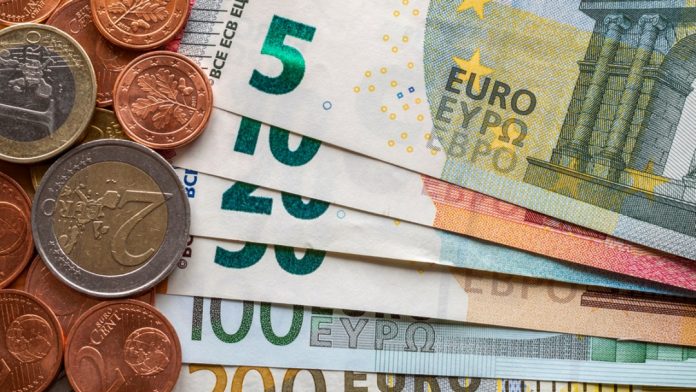- Federal Reserve Chair Jerome Powell dashed hopes of quick economic recovery
- 5 million more Americans expected to have claimed unemployment benefit
- German inflation +0.8% yoy, Spain -0.7% yoy
- EUR/USD -0.05% at US$1.0810 at 08:15 UTC >> Real time exchange rate
The Euro is extending losses for a second straight session on Thursday. The Euro US Dollar exchange rate settled -0.3% at US$1.0818 on Wednesday, close to the low of the day.
At 08:15 UTC, EUR/USD is trading -0.05% at US$1.0810 after briefly slipping through US$1.08 as a risk off mood prevails.
A few home truths from Federal Reserve Chairman Jerome Powell yesterday hit risk sentiment, lifting demand for the safe haven greenback. Jerome Powell painted a gloomy picture of the economic outlook, dashing hopes of any quick economic recovery from the coronavirus crisis. He warned of a long road to economic recovery raising fears of a deep, pro-longed economic downturn.
The souring mood in the market is boosting demand for the safe haven US Dollar, whilst dragging on the Euro.
Jerome Powell also squashed any expectations of a negative interest rate in the US. Ahead of Mr Powell’s speech the Fed Funds had indicated that investors expected the Federal Reserve to adopt negative interest rates in June next year. Jerome Powell’s rejection of negative rates has also helped boost the US Dollar.
Investors will now look ahead to the release of US initial jobless claims. This has become one of the most closely watched macro data releases thanks to its timely insight into the health of the US labour market.
Analysts are expecting an additional 2.5 million Americans to have signed up for unemployment benefits in the week ending 8th May. This would bring the total to 36 million initial jobless claims since the 21st March, which equates to a quarter of the US working population. With such extraordinarily high levels of unemployment any economic recovery will be drawn out.
As the mood in the market sours, the Euro has come under pressure. Inflation data from Germany and Spain was in focus, printing at +0.8% and -0.7% year on year respectively. The figures highlight the differences that exist in the Eurozone between the largest economy, Germany and Spain, one of the hardest hit by the coronavirus.
Investors will now look ahead to the release of the European Central Bank economic bulletin report for further clues as to the economic damage caused by the coronavirus lockdown.





